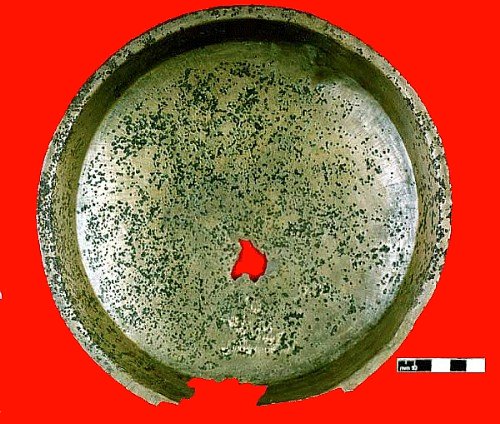|
|
Shallow Bronze Bowl from Sutton Courtenay, Oxfordshire: 2nd/3rd century AD |

The bowl is one of a pair found on the site of a Roman cemetery lying on the parish boundary of Didcot, Sutton Courtenay, Appleford and Long Wittenham, a good example of the association between cemeteries and parish boundaries long noted in Britain.
This, the slightly smaller of the two otherwise identical shallow, everted rim bowls, had been placed inside the other bowl in the grave. The deposition of bowls as grave goods is not unusual in Romano-British cemeteries.
Fine silver examples of flat-bottomed shallow bowls with everted rims sometimes have Christian symbols when found in hoards (buried treasure); these may have held bread for the Eucharist. There were also examples in pewter (a base metal rich in lead). If these were meant to hold bread products, perhaps the copper-alloy bowls performed the same function at table.
The bowl was made of cold-worked sheet bronze, using a hammer for raising and planishing. The stamp on the outside is probably a locating-mark for a compass used to design the bowl.
© 1998 Oxfordshire Museum Service, Setúbal Museums and the Benaki Museum